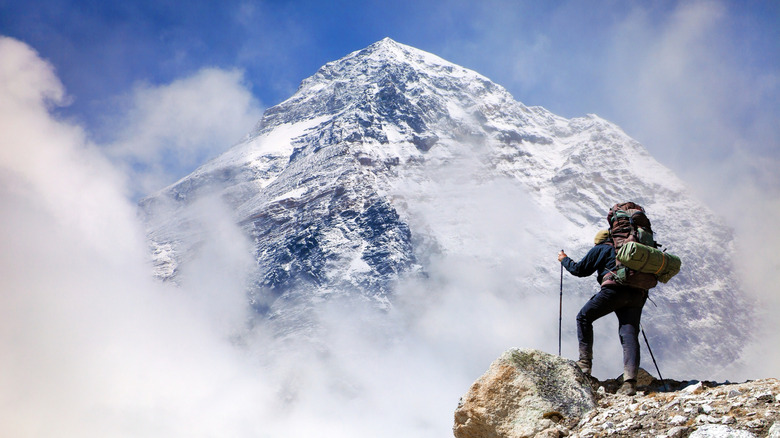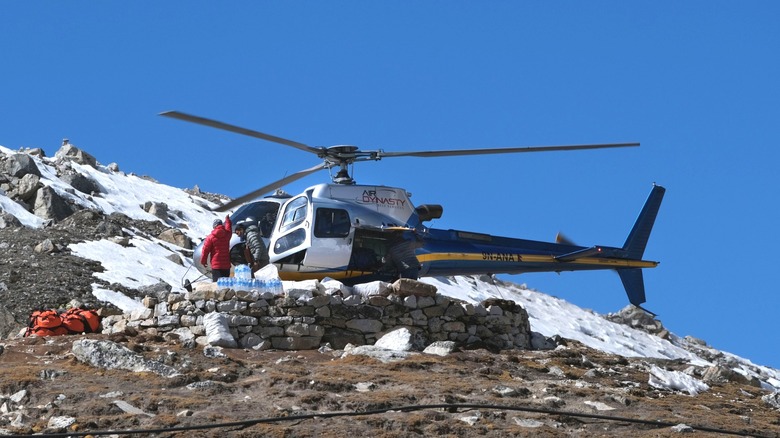The Only Time A Helicopter Landed On Top Of Mount Everest
As one of the four main types of landforms, mountains can rise to massive heights. In particular, Mount Everest has the greatest elevation above sea level in the world at 29,000 feet, making the climb to the summit strenuous for trekkers. Even some prepared climbers have trouble, and when tourism is high and the weather is at its worst, the death toll on Mount Everest can rise like it did in 2019. And, in those cases, it's no easy feat to land helicopters near the base camps, let alone near or on the summit. In fact, a helicopter has only landed on top of Mount Everest once in history.
It was May 14, 2005, when Didier Delsalle, a test pilot for Eurocopter (now Airbus Helicopters), made a record flight in an AS 350 B3 and landed on Mount Everest's summit. The stripped-down production aircraft was only certified to operate at a maximum altitude of 23,000 feet, but he explained to Vertical, "The idea was to prove to our customers all the margins they have while they're using the helicopter in the normal certified envelope, compared to what the helicopter is capable of during the flight test."
To be considered an official landing, the Fédération Aéronautique Internationale (FAI) required that the skids remain on the ground for at least two minutes. Delsalle blew that out of the water with a time of three minutes and 50 seconds. When the recording equipment didn't work because of a software glitch (which was eventually recovered), he went for a second successful landing the following day. So, technically, there have been two helicopter landings on the top of Mount Everest.
Why it's so difficult to land helicopters on Mount Everest
It's no secret that Mount Everest is one of the most hostile environments to exist on Earth today, and that's true for both climbers and helicopters. When it comes to flying in the region, the extremely low temperatures of zero to negative 22 degrees Fahrenheit negatively affect the performance of aircraft. Compounding the problem, the higher the altitude, the thinner the air becomes, which further reduces the performance of the aircraft's engine. The lower density air also reduces the efficiency of the rotor system, reducing the ability to safely operate the helicopter.
On top of that, avalanches, low visibility, strong winds, and unpredictable weather fluctuations pose some major challenges. In fact, when recalling the landing day in his interview with Vertical, Delsalle said, "I had been lucky, and the climbers unlucky, because we had two days of bad weather, and all of the climbers had to go down because it was very, very bad weather." He took his chance as soon as the thunderstorm ended and the weather was clear enough.
Delsalle also talked about the fine line of navigating the updrafts and downdrafts around the mountain, which started with several reconnaissance approaches. "On one side of the mountain, on the updraft side, I wasn't able to approach the mountain because even taking out all of the power of the aircraft, I was still climbing," he explained. "But of course on the other side you had the downdraft side, and on this side even with maybe 60 knots on the airspeed indicator I was going backward," the test pilot added, "and the helicopter at full power was not powerful enough to counteract that." He described the experience as something where you have to "let the mountain accept you."

